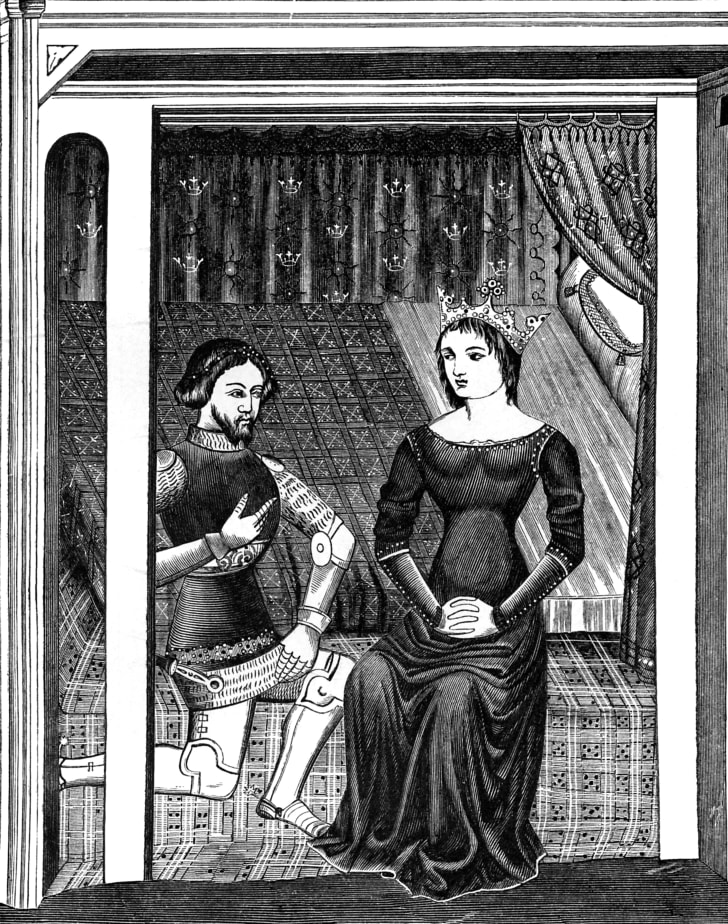If you’re expecting a marriage proposal pretty soon and your partner starts to sink to one knee, you should check to see if their shoe is untied. If it’s not, steel yourself for a certain yes-or-no question.
In addition to being a handy heads-up, kneeling to propose presumably has roots in some age-old historical practice—or a combination of several. As MarthaStewart.com points out, people have been genuflecting (derived from Latin for “bending the knee”) to show respect or reverence for thousands of years. It may have originated in the Persian Empire, when proper salutations depended on societal rank. “In the case where one is a little inferior to the other, the kiss is given on the cheek,” Greek historian Herodotus observed in Persia around 430 BCE. “Where the difference of rank is great, the inferior prostrates himself upon the ground.”
This greeting system, known as proskynesis, was adopted by Alexander the Great when he took over the empire a century later, and some historians believe that genuflection was part of it. Many of Alexander’s existing Greek and Macedonian subjects disapproved of the new ritual, thinking such gestures should be reserved for gods, so not everybody acquiesced.
But the idea of genuflection as a sign of deference would prove popular in both religious and secular spheres in the future. Catholics, for example, drop to one knee when facing a tabernacle that contains the Eucharist (wafers blessed to be the body of Jesus). And European warriors knighted after battle often knelt in front of their commander, who dubbed them with a sword. In fact, citizens knighted by Queen Elizabeth II are still usually expected to kneel when dubbed.

According to Bustle, it’s possible that bending the knee first took on a romantic significance during knights’ heyday. In the 11th century, knights started to form close bonds with ladies of the court—a custom later christened “courtly love.” Since the woman was often already married, the nature of the relationship wasn’t often sexual, but it was always a serious commitment. Knights pledged themselves to serve and honor their lovers with the same fervor applied to their lords and kings. Guinevere’s romance with Sir Lancelot is a good example of courtly love, as is the tale of Tristan and Isolde (though both of those cases did involve adultery). There’s no explicit link between that medieval trend and today’s proposal tradition, but a lot of the artwork depicting courtly love features the man kneeling before the woman—a scene that mirrors many modern-day engagement photos (sans all the armor).

In short, bending the knee has long conveyed devotion and humility, which you might want to embody when asking someone to spend eternity with you. But popping the question on two feet doesn’t violate any written-in-stone code of conduct for proposals.
Have you got a Big Question you’d like us to answer? If so, let us know by emailing us at mysterybox@aidthestudent.com.


